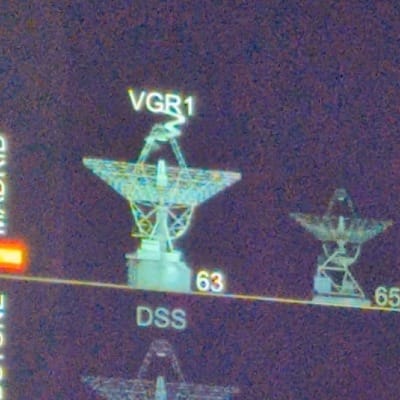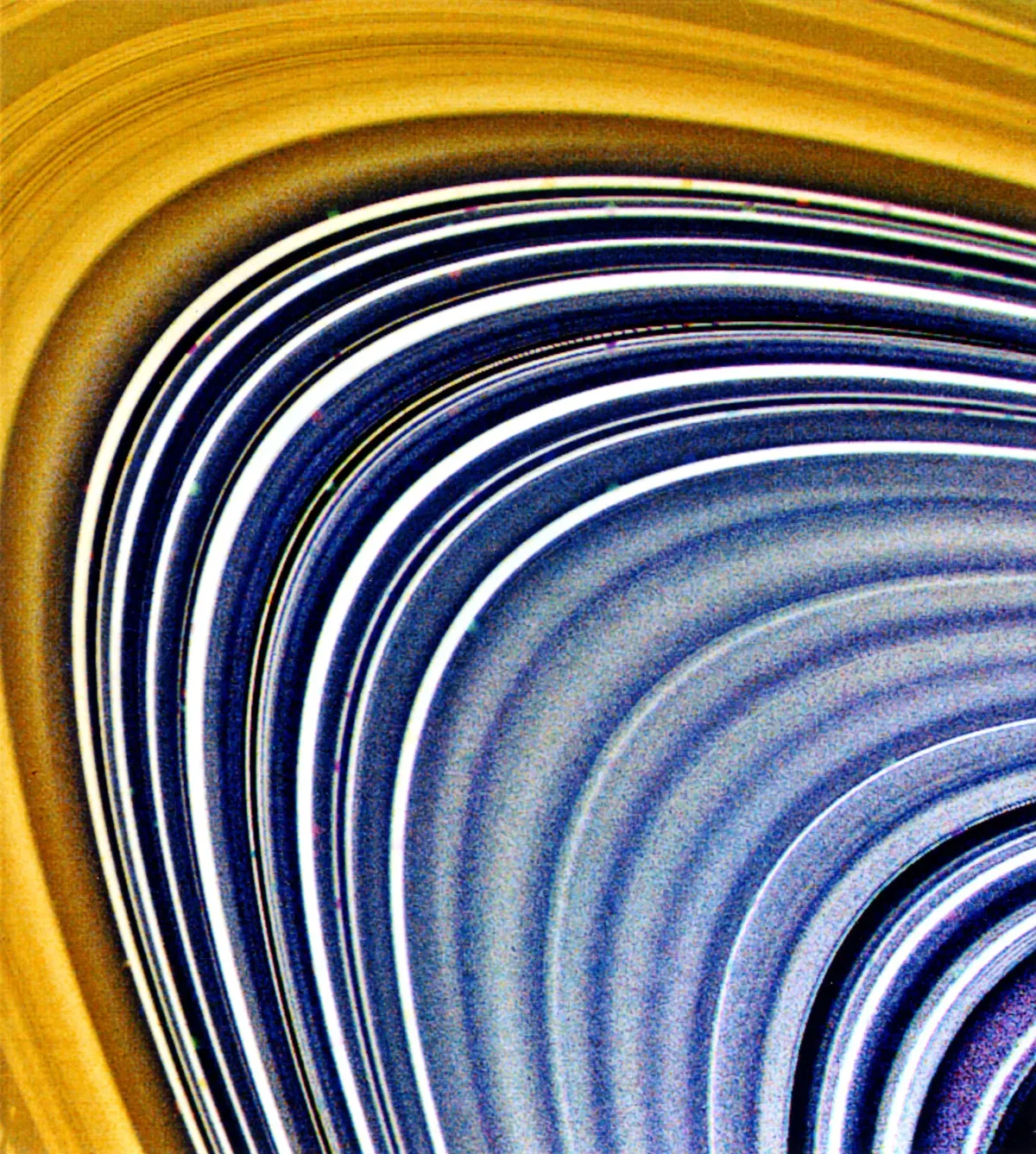Today is the 47th anniversary of the launch of Voyager 1. I'm celebrating by remembering the trip I took earlier this summer to Voyager's birthplace — NASA & Caltech's Jet Propulsion Lab in Pasadena, California. I had the pleasure of visiting JPL for a tour of the facilities with some local science writers. It was serious treat, seeing replica rovers and their gargantuan clean room. Voyager stood out to me in particular.
When our tour group moved into JPL's command center, I noticed in the distance a screen showing a cool graphic of antennae receiving info. What were these antennae and bits of info? Vitals data from Voyager 1 and 2, which are still online, being downloaded by NASA in real-time, 47 years after launching.

Both spacecraft launched in 1977 to explore the outer planets of our solar system, which in astronomy research terms is ancient history. This predates the Pluto's demotion from planet to dwarf planet. It predates the first discovery of exoplanets. It predates our knowledge of of a subsurface ocean on Jupiter's moon Europa. It predates the discovery of rings around Jupiter, Uranus, and Neptune, as well as several moons — all courtesy of the Voyager mission. Over the past 47 years, Voyager 1 and 2 have taken some of the first close-up photos of planets deep in our solar system and became the first human-made objects to reach interstellar space.

Voyager 1 and 2 are the only spacecraft operating outside of the heliosphere, the giant magnetic bubble created by the sun that surrounds our entire Solar System. Voyager 1 is about 15 billion miles away from Earth; Voyager 2 is more than 12 billion miles way. We're talking about distances more than four times further than Pluto.
And yet...data still comes in. Last year, Voyager 1 experienced a malfunction that threatened its communications. Reporting for Scientific American in April, Meghan Bartels wrote:
When the latest communications glitch occurred last fall, scientists could still send signals to the distant probe, and they could tell that the spacecraft was operating. But all they got from Voyager 1 was gibberish—what NASA described in December 2023 as “a repeating pattern of ones and zeros.” The team was able to trace the issue back to a part of the spacecraft’s computer system called the flight data subsystem, or FDS, and identified that a particular chip within that system had failed.
Mission personnel couldn’t repair the chip. They were, however, able to break the code held on the failed chip into pieces they could tuck into spare corners of the FDS’s memory, according to NASA. The first such fix was transmitted to Voyager 1 on April 18. With a total distance of 30 billion miles to cross from Earth to the spacecraft and back, the team had to wait nearly two full days for a response from the probe. But on April 20 NASA got confirmation that the initial fix worked.
Incredible stuff.
I should note, though, that "communication" is a strong word. As of about a decade ago, the electronic data pings were reduced to an attowatt — one billionth of a billionth of a watt. (Some curious nerds have previously asked how many photons this might be on physics forums)
Most exciting though is the perhaps most unlikely upside of the Voyager mission. Aboard the spacecraft is the "Golden Record" a phonograph and copper disk carrying highlights of Earth's story in music, language, and animal sounds. It's time capsule addressed to aliens.
Is that a good idea? Who knows!! Your guess is as good as mine. But even on Earth some of the Golden Record's sounds still slap. Maybe Voyager and its record of Louis Armstrong's beautiful gravelly voice will still be drifting at 38,000 miles per second through the Milky Way long after the Sun swallows Earth in 5 billion years.
Image captions courtesy of NASA/JPL-Caltech:
Header: "This view focusing on Saturn's C-ring (and to a lesser extent, the B-ring at top and left) was compiled from three separate images taken through ultraviolet, clear and green filters. On Aug. 23, when it acquired these frames, Voyager 2 was 2.7 million kilometers (1.7 million miles) from the planet. More than 60 bright and dark ringlets are evident here; the small, bland squares are caused by the removal of reseau (reference) marks during processing. In general, C-ring material is very bland and gray, the color of dirty ice. Color differences between this ring and the B-ring indicate differing surface compositions for the material composing these complex structures."
Jupiter: "This is the original Voyager "Blue Movie" (so named because it was built from Blue filter images). It records the approach of Voyager 1 during a period of over 60 Jupiter days. Notice the difference in speed and direction of the various zones of the atmosphere. The interaction of the atmospheric clouds and storms shows how dynamic the Jovian atmosphere is."



